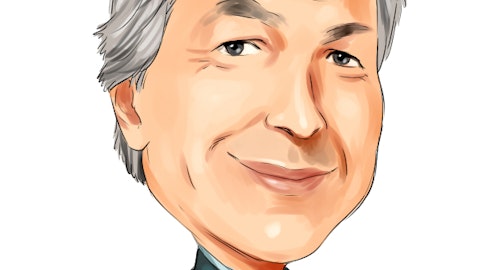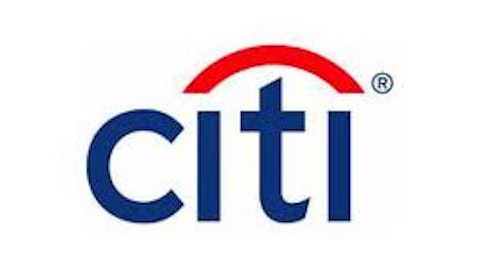Have you read the jobs report published by the Department of Labor Statistics earlier this month? If you haven’t, you should. And if you have, you should be very nervous.
Yes, I know the S&P has been flirting with 1,700, and I know the economy has been adding 160,000 to 200,000 jobs per month for quite some time now. But that is today. I’m nervous about tomorrow. I’m nervous about 2014 and 2015.

A brief timeline
To get to the future, we have to start in the past. First, the Great Recession happened. Everything crumbled, and for a time, we thought the world as we knew it was ending. I trust we’re all familiar with this story by now.
Then the government intervened. There were massive stimulus efforts, companies bailed out, banks forced to accept capital; there was “Cash for Clunkers,” and interest rates bottomed out effectively at zero. Left in the rubble was 10% unemployment, negative GDP growth, and the very real threat of deflation.
Since then,3 the country has calmed. The financial world is no longer hanging over the precipice. Government programs have wound down. The Treasury Department has steadily sold its positions in bailed out companies. Unemployment has gradually improved to where it stands today, at 7.4%.

US Unemployment Rate data by YCharts.
The Fed’s bond buying, Quantitative Easing, and other soirees into the world of artificially low interest rates have not, as of yet, abated.
But that is about to change, and over the next six months, the interest rate dialogue will dominate the financial world. It will impact banks, consumers, governments, and businesses alike.
And once mortgage rates and auto rates and business loan rates all return to more historically normal levels, what happens next? Does the economy have the horsepower to continue the recovery?
Low interest rates have carried the economy
During the great recession, demand shrank across the board. Consumers no longer applied for the big mortgage to buy a dream home. Debt outstanding shrank across the board as both individuals and businesses hoarded cash. Consumer spending tanked.
Cheap monetary policy was fundamentally about stoking this demand to get the economy moving again. And, by and large, it seems to have worked.
But in six or 12 or 18 months, when there isn’t any more cheap money, the economy will once again rely on the demand side to fuel growth. And that’s why 7.4% unemployment makes me nervous.
What’s so scary about 7.4%?
7.4% in and of itself is not so scary. It’s what lies just underneath that has me on edge.
More than four million Americans are currently considered long-term unemployed, and the unemployment rate for American youth is a staggering 24%. In July alone, the labor force shrank by 37,000 individuals, a troubling indication of the struggle for the American public to fully reengage in the economy. Workers earned less money on average in July because companies simultaneously cut hours and lowered hourly pay.

US Labor Force Participation Rate data by YCharts.
Fools, this is not a picture of robust consumer demand. The economy did add a net of just north of 160,000 jobs in July, and that is certainly positive news. However, it’s simply not strong enough to sustain the economy without the Federal Reserve’s interest rate accommodations.
Banks are on the front lines
Every bank in the country, large or small, sell products where the price is directly correlated to the prevailing market interest rates. If rates rise, their clients must now be willing to pay more for the cash they want to borrow. To be successful, the underlying economy must be sufficiently strong to justify this higher cost of capital — be it for a business loan, car loan, or home purchase.
Without strength in consumer demand, banks that rely heavily on retail banking could suffer when the cheap, easy money goes away. Wells Fargo & Co (NYSE:WFC) reported that 50% of its second-quarter revenue came from net interest income, basically a fancy way of saying its income from loans, 40% of which are residential mortgage loans. Of the bank’s non-interest income, 26% came from fees related to mortgages. With this much exposure and reliance on consumers taking out loans, Wells Fargo & Co (NYSE:WFC) could lose some momentum as rates rise without an improvement on the consumer demand side.
The impact will also reach smaller regional players. U.S. Bancorp (NYSE:USB), a high-performing regional bank, reported that non-interest income related to its mortgage business declined almost 20% year over year in the second quarter. The bank reported that 65.5% of total revenue was generated through net interest income. Again, when rates rise, there is a real risk that consumers will not be willing to take out new loans or refinance existing loans. U.S. Bancorp (NYSE:USB) is already seeing some decline, particularly in its mortgage business.
The problem extends beyond just mortgages and consumer lending. When consumer demand struggles, many businesses also struggle. For banks that have seen strong performance in commercial lending, a struggling labor market could trickle down and have a negative impact on the business lending side as well.
People’s United Financial, Inc. (NASDAQ:PBCT) for example, a regional bank centered in the northeast, reported annualized commercial loan growth of over 14% from March 31 to June 30 of this year. That represents nearly $540 million in new commercial loans in just three months. Without an improvement in the labor market, it’s not a sure thing that this type of performance can continue when interest rates rise.
Banks are, for better or worse, highly reliant on the American consumer. The labor market provides the cash flow and financial stability for Americans to engage in bank services, from mortgages to auto loans to small and middle market business loans. For the banks above and others, the job market must improve significantly for business results and stock performance to continue over the next 18 months.
Without an acceleration in the labor market’s recovery, the medium-term outlook is not pretty
Believe it or not, I do consider myself an optimist. The business sector showed unexpected life in second-quarter GDP, with notable growth in residential construction and in capital investment.
One of the beauties of the U.S. economy is how positively self-reinforcing it can be. As more people get jobs, even if it’s only 160,000 per month, more people will have the means to buy a home, to go to the movies, to invest in the stock market. And as that money works its way into the economy, it will form the basis for another round of growth, another new job, and for the cycle to continue.
The article Why a 7.4% Unemployment Rate Is a Bad Sign for Your Investments originally appeared on Fool.com and is written by Jay Jenkins.
Fool contributor Jay Jenkins has no position in any stocks mentioned. The Motley Fool recommends Wells Fargo. The Motley Fool owns shares of Wells Fargo.
Copyright © 1995 – 2013 The Motley Fool, LLC. All rights reserved. The Motley Fool has a disclosure policy.




